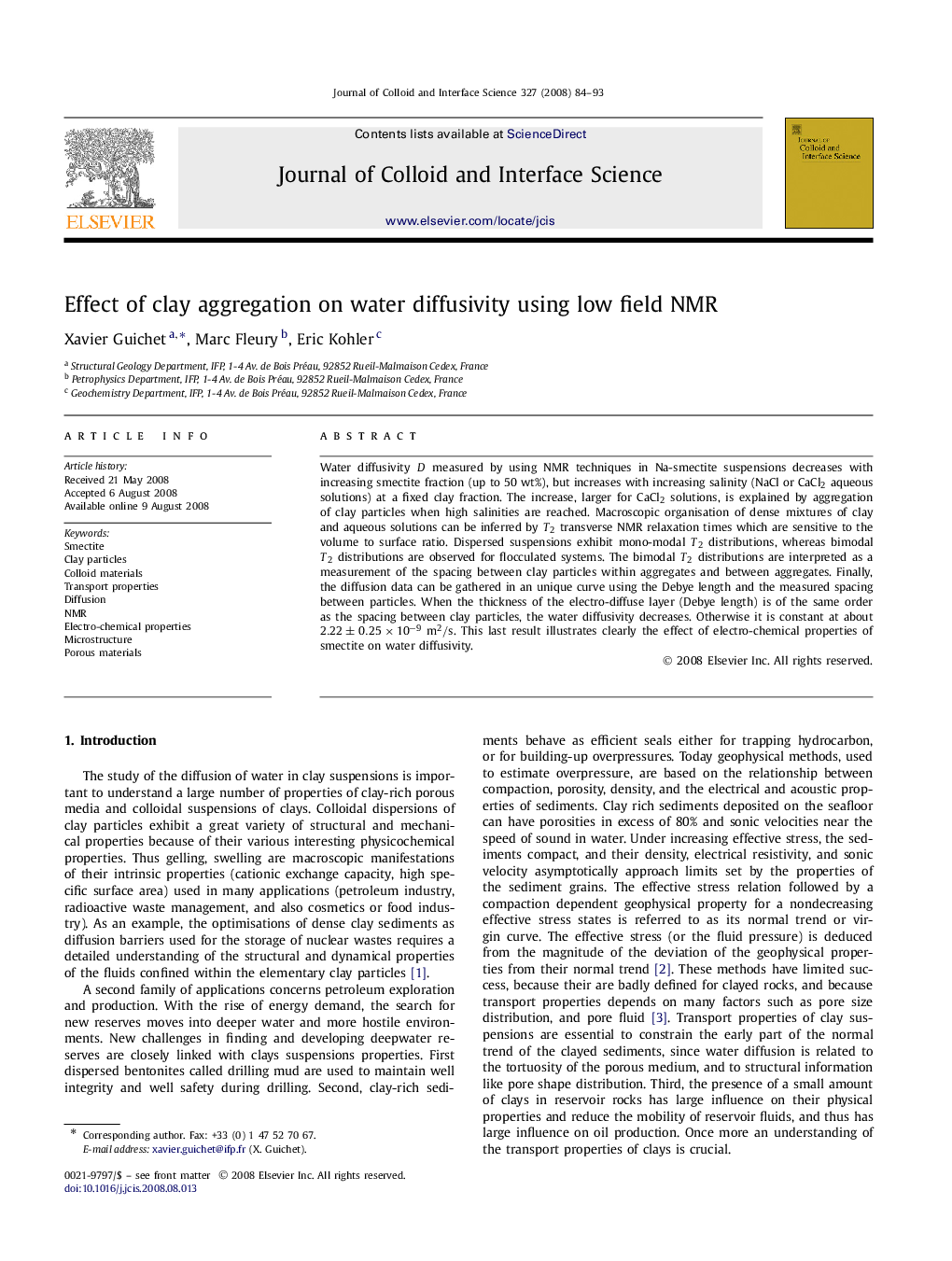| Article ID | Journal | Published Year | Pages | File Type |
|---|---|---|---|---|
| 611291 | Journal of Colloid and Interface Science | 2008 | 10 Pages |
Water diffusivity D measured by using NMR techniques in Na-smectite suspensions decreases with increasing smectite fraction (up to 50 wt%), but increases with increasing salinity (NaCl or CaCl2 aqueous solutions) at a fixed clay fraction. The increase, larger for CaCl2 solutions, is explained by aggregation of clay particles when high salinities are reached. Macroscopic organisation of dense mixtures of clay and aqueous solutions can be inferred by T2T2 transverse NMR relaxation times which are sensitive to the volume to surface ratio. Dispersed suspensions exhibit mono-modal T2T2 distributions, whereas bimodal T2T2 distributions are observed for flocculated systems. The bimodal T2T2 distributions are interpreted as a measurement of the spacing between clay particles within aggregates and between aggregates. Finally, the diffusion data can be gathered in an unique curve using the Debye length and the measured spacing between particles. When the thickness of the electro-diffuse layer (Debye length) is of the same order as the spacing between clay particles, the water diffusivity decreases. Otherwise it is constant at about 2.22±0.25×10−9 m2/s2.22±0.25×10−9 m2/s. This last result illustrates clearly the effect of electro-chemical properties of smectite on water diffusivity.
Graphical abstractNormalised water diffusivity versus the ratio RlRl of the two characteristic lengths of the suspension, i.e. the apparent spacing between clay particles divided by the Debye length.Figure optionsDownload full-size imageDownload as PowerPoint slide
